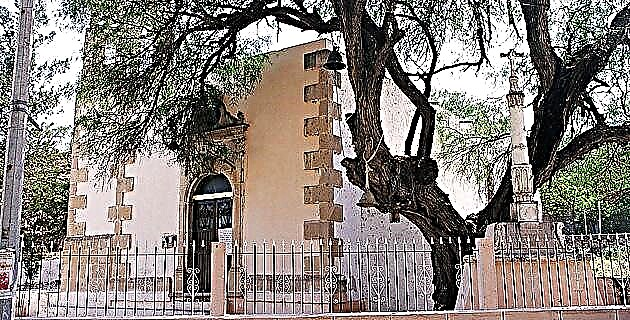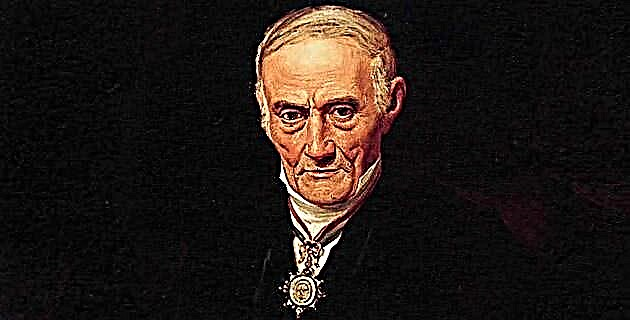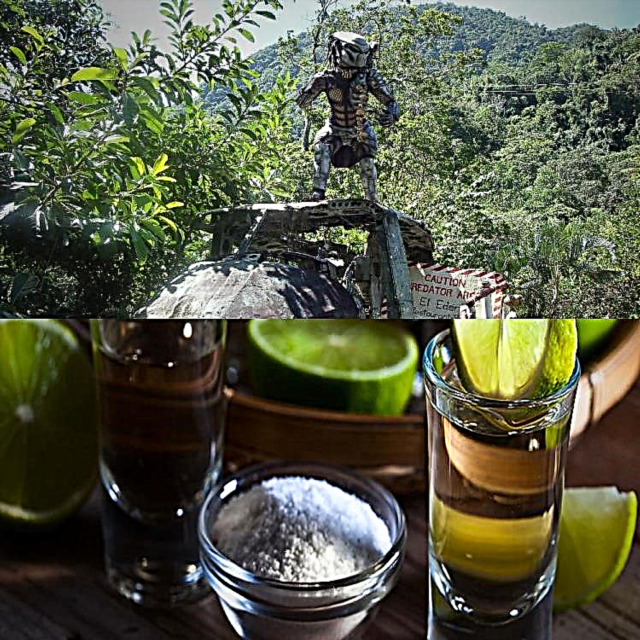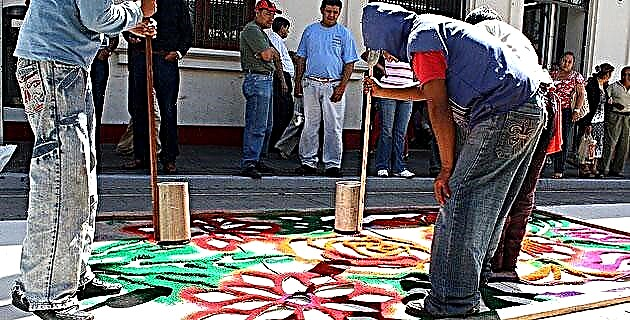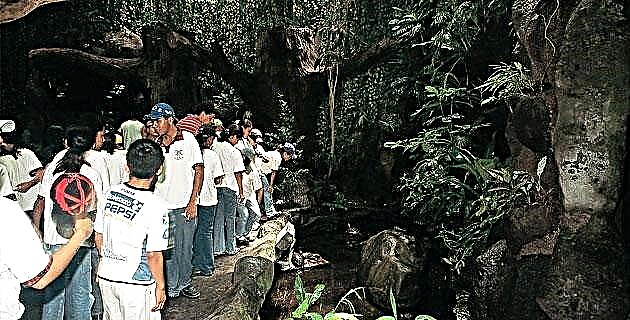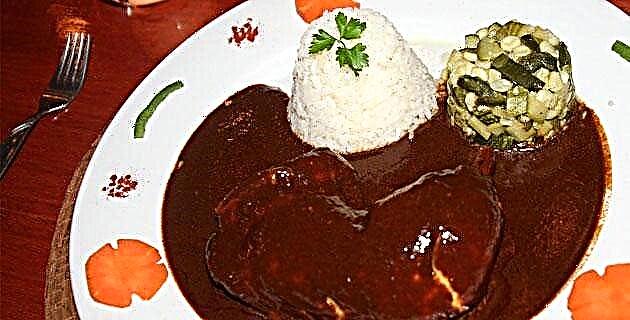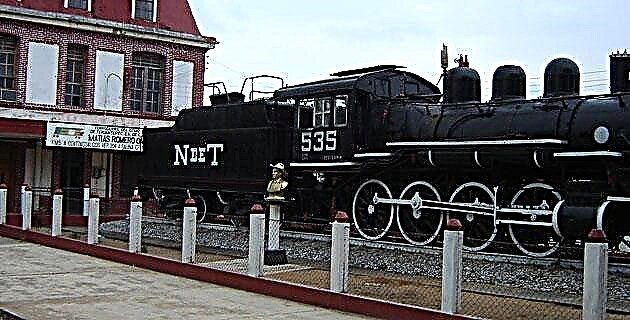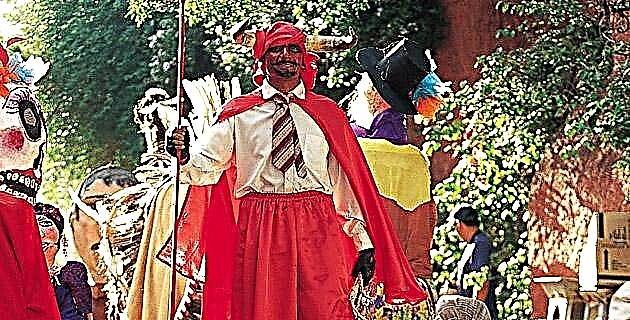
The inhabitants of La Labor, Guanajuato, for more than 170 years have celebrated San Miguel Arcángel in a unique way; the war bands resound, the cavalry gallops and the angels throw marigold flowers ... The work becomes an extension of heaven.
From my point of view, wars are not a pleasant or good way, not even fruitful, they always leave a disappointment. But what would happen if we mix faith, worship and the military in a war? Together these elements would give us a war with divine overtones, similar to the Crusades or the Cristero war; however, what I have to deal with here is a battle in which messianism, purification and renewal of individuals merge.
This confrontation between sin and exaltation through virtue takes place in a town located on the banks of the Río de la Laja, whose inhabitants have the belief that being asleep is as if one were dead, because sense is lost to be alive, and because dreams are the life of the soul that moves rapidly to other places. This town is called La Labor and belongs to the municipality of San Felipe, Guanajuato. There a very special craft is made, burnished clay.
People from that land who have had to go to live far away, looking for better luck, others who have emigrated to support their families, and many who are not from the place, make a pilgrimage to the Chapel of the Indians that is located in the main square of La Labor, to worship San Miguel Arcángel on September 28, 29 and 30. It should be mentioned that the distinguished members of the San Felipe History Society comment that this festival was one of the first to be established in the municipality, and today it is more than 170 years old. Only on two occasions has it been suspended because the image was moved to the municipal seat, but later it was returned and the tradition continued. This act still lives on in the memory of its inhabitants, as one of them made the following appreciation to me: “He liked it here, even though they wanted to take it to San Felipe, they couldn't. I tell him that he liked it here and he doesn't want to go ”.
The big party starts on the 28th; Between commercial stalls, between carnitas, chicken and barbecue dining rooms, between mechanical and fairground games, the atmosphere is filled with martial music because from the four cardinal points you can hear the rumbling of the drums and the sound of the trumpets of the war bands of Señor San Miguel; its members make their arrival formed in rows according to their degrees or hierarchies. These bands come from Dolores Hidalgo, San Miguel Allende, Monterrey, Mexico City, and elsewhere. The cavalry of this angelic being also makes an appearance, accompanied by his queen and his king, as well as a pilgrimage of Saint Louis whose members arrive on bicycles.
On this day the war bands perform a ceremony known as "the meeting", which begins with the thunder of a rocket launched by the chapel guards, announcing the arrival of a war band. The local band gets ready and waits for the commander's order to go to meet the visiting band. When facing each other, the commanders carry out the following dialogue:
"Where are all these people going?"
–We came to look for a hidden treasure.
- Look no further, that treasure is here.
This ceremony is the simile of a meeting of angels, because it must be remembered that the bands are of the Archangel Saint Michael and their function is to guard the image of their captain and help face any evil that occurs on Earth, like him. , which does so both above and on the earth plane; Furthermore, this confrontation allows us to ascertain if these visitors are good angels and not just another trick of the fallen angels who try to seize the loot.
When it is finally shown that the visitors are part of the hosts of the Archangel Saint Michael, they are led to the chapel, where the chest that keeps the great treasure is. Once inside it they stop in front of the altar, and when they appear before their captain, that shining treasure gives the members of the band a sense of their faith, showing them that their forces have not been wasted uselessly.
The pilgrimages go out in silence and leave their reliquaries of wood and glass, which inside contain an image of the saint. With these earthly angels, Labor is consecrated as part of heaven.
The war bands and the cavalry are not the only ones who know that there is a treasure there. They know it in the same way an infinity of people who gather in that place to pay homage to "Güerito" (as they also name San Miguel Arcángel), being a minority the one who takes the opportunity to visit the family, many others arm in the main square their tents or improvise plastic awnings, while some more prefer the proximity of Señor San Miguel and settle in the atrium to spend the night under the celestial vault. In such a way, all these individuals plus the people who have yet to arrive with their faith, by stepping on that piece of heaven acquire the quality of infantry angels that have been scattered all over the face of the Earth, giving with their visit a sample of their faith and his devotion, and seeking in that image the renewal of virtue lost by sins.
Those who have received the support of this winged being, or want to return to a source of spiritual tranquility, go up kneeling to the altar by a small sand road, but as the angels see themselves as equals, they help to reduce the load by placing cardboard or blankets during the tour; on the other hand, there are fallen angels who reject all help and arrive repentant and seeking redemption, showing their scraped and bleeding knees as a reminder of the fall.
At night the image is moved to an adjoining church that is under construction. A mass is held accompanied by martial music performed by the war bands, lined up in parallel lines in order to guard the hall, while the cavalry stands guard outside the church. Later the Archangel is invested by the general of the cavalry, who is accompanied by the king and queen. After mass the captain returns to his place of origin. Throughout the night his infantry hosts sing praises and war bands play outside the chapel.
The 29th party begins at dawn, when at dawn the land of the town is shaken as a result of the explosion of a buried rocket, which they call "camera", and from somewhere, a trumpet awakens the angels, announcing the new day. The devotees go to the chapel to sing Las Mañanitas to “Güerito”. At noon all the war bands resound and prostrate themselves outside the church, awaiting the departure of the captain. When he left, all the bands followed him, many people joined them as infantry, and finally the cavalry joined them. They walk around the plaza and head to a soccer field at the back right of the chapel.
Already on the court, the madness of the martial sounds and the colors of the flags is unleashed; the field is filled with a large number of angels that give it a master touch, since the lines of the war bands and their infantry cover the entire esplanade. They walk and make a star, they meander in such a way that they build two concentric circles, having as a center a covered platform where on a table is the image of Saint Michael the Archangel, which is accompanied by parents who observe the event with delight. After the infantry has made its way, the cavalry enters playing their trumpets, they take a turn and surround the perimeter of the field.
The priests officiate a mass with the little light of the cloudy day that never fails on this date.
The cavalry gallops around the last circle. The angels throw marigold flowers among them, because being divine beings they cannot have better weapons than sparks of light with which to completely purify the slags of the sins that they still carry. The bands announce the end of the "run" with a pause of silence.
The martial music returns, like the captain to the chapel, and there the party is over. Many people and bands return to their homes, but before they go to say goodbye to the only prince of the heavenly hosts, they sing his hymn to him and leave hoping that they have been renewed with the fire of the flaming sword of the Archangel Saint Michael.
The above is repeated on September 30. It should be noted that on the holiday, when the mass is not very long, a representation is made that commemorates the first battle of Saint Michael the Archangel and his army against Lucifer's battalions. The representation shows us that even with the care of the war bands, fallen angels infiltrate this heaven, known as thieves, because they rob the king and queen of a treasure hanging from the neck of a donkey, these kings being neither neither more nor less than Saint Joseph and the Virgin Mary, and that golden treasure is the Baby Jesus before he was born. The robbers run with the garment through one of the circles and the infantry angels point their weapons against the spies. The thieves look for an exit that they cannot find, because they are surrounded by the armies of the Archangel San Miguel, who leads them from the stage. In the end the thieves die and the great treasure is recovered.
The festival, as we have seen, has very interesting features that are different from others, because here there is no union of heaven and Earth, the Labor itself becomes an extension of heaven, in addition to giving an alchemical aroma in its essence. very particular, since it acquires continuous transmutations and contains a secret that I have tried to unravel in this article, since the wooden and glass reliquaries keep inside the true philosopher's stone, the true regenerator of light in the form of an archangel, just as their custodians believe that when they die they hope to be part of the heavenly army in the image and likeness of their saint. It all starts from the premise that if we have been created in the image of God and if the gods are created in the image and likeness of men, then why not fertilize our own image. After all ... who is like God.
IF YOU GO TO WORK
If you are coming from the city of San Miguel de Allende, take federal highway no. 51 towards Dolores Hidalgo, follow the same road until the deviation with La Quemada, turn right and you will arrive at La Labor. If you leave from the city of Guanajuato on federal highway no. 110 turn off in Dolores Hidalgo to highway no. 51, turn towards La Quemada and further on you will find La Labor.

